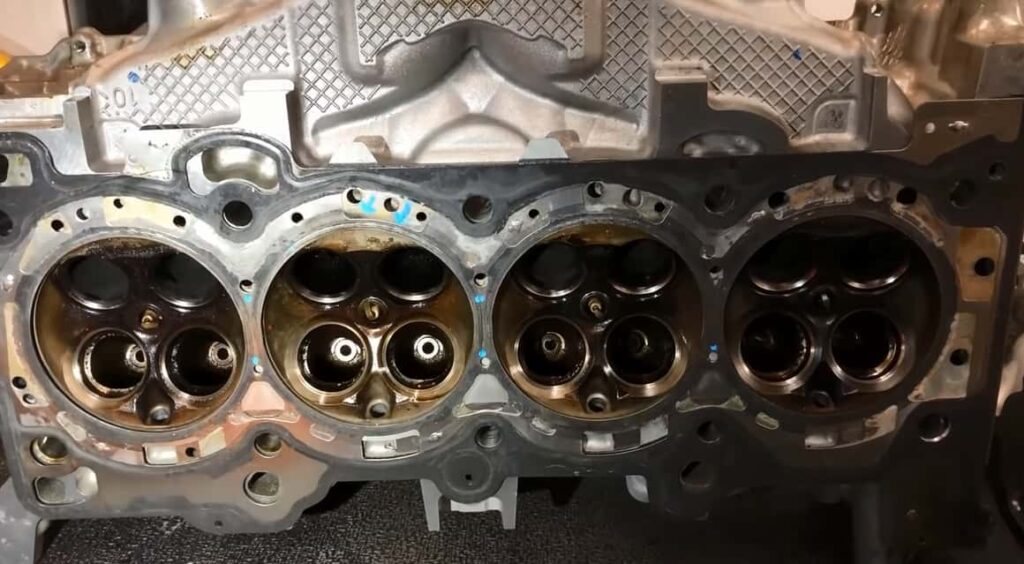Over time, you may experience some symptoms of Ford 2.0 ecoboost head gasket problems.
But let’s keep it real – when your gasket is damaged, it is never fun. In fact, it can result in several problems that can most certainly impact your day. This is why it is best to have these issues sorted out before things take a turn for the worse.
Thankfully, there are some signs of a head gasket issue. You should observe these signs and take quick action at the first sight of a problem. This will allow you to reduce the risk of further damage that can cost you so much money to fix.
Let’s take a look at the signs of a head gasket problem with the Ford 2.0 ecoboost, why these happen and what you can do. Here we go!

Ford 2.0 Ecoboost Head Gasket Problems
When you have a blown head gasket in your vehicle, there are a few reasons why this may have happened. But no matter what the cause, one thing is for certain – it is never good for your engine. There are several issues that may arise, so it is best to have these concerns remedied sooner than later.
Here are among the typical signs of head gasket problems with your Ford 2.0 ecoboost.
1. Overheating engine
One of the clearest signs that your head gasket is not doing good is when you have an engine overheating problem. If this overheating concern happens a lot of times, which may be due to a faulty fan, coolant leak, or a clogged radiator, then the head gasket may eventually fail. But once you have a blown head gasket, the engine can also overheat.
It is easier for hot exhaust gas to leak into your cooling system. Or, you may have to worry about coolant leaking into your cylinders and get burned off eventually as steam. But either way, the result is never good because of overheating.
Most importantly, there are further damages linked with overheating engines. The cylinder head may warp, or the catalytic converter can incur damages because of the hot steam. Thus, further repairs may be required to your vehicle because of these additional issues.
2. Power loss
Another concern with a blown head gasket is that the compressed fuel or air tends to escape. This is why there is a reduction to the compression of your cylinder. Thus, compression loss leads to a rough performance of your engine and a marked reduction to its power. When there is failure, it may also be followed by an exhaust leak sound that you should closely pay attention to.
3. Contamination of oil
Next, you need to carefully check for signs of oil contamination. This is a very obvious sign of a damaged head gasket. It appears as some kind of a milky sludge located on the underside of your oil filler cap. This usually happens when coolant gets into your oil or oil gets into the coolant. While it may not be a conclusive sign of a failed head gasket, it is definitely a symptom of a potential damage to your engine.
It is also worth noting that your antifreeze may have contaminated your oil. This is why if you continue to drive, this can cause damage to the bearings of your engine. The most minimal repair work done involves an engine oil flush and replacement of the oil filter.
But if the issue is much worse than what it seems, the bottom end of your engine may need to be disassembled to make sure the bearings are still intact. This also helps in clearing out further signs of oil contamination.
4. White smoke exhaust
When your head gasket is malfunctioning, you may notice some billowing clouds that smell sweet. The smoke is colored white and usually comes from your exhaust. This happens when your antifreeze leaks past your gasket and then gets into your cylinders. Thus, the antifreeze turns to steam because of the combustion that takes place.
In some instances, the smoke is not white but it is bluish. This happens where there is a leak from your oil passage and onto the cylinder. Any type of a gasket failure can lead to a combustion pressure into either your oil breather system or cooling system.
5. Exterior leaks
In case the cylinder head gasket ends up blowing between your oil or water passage, as well as the exterior of your engine, it can lead to an oil leak or a coolant leak. Thankfully, it is the minimal issue that can arise, but it is still something not to be taken lightly.
When you notice a leak on the outside, this may not qualify as an issue that requires immediate attention. There is mess, of course, yet you do not need to make major repairs right away. However, it is still definitely something that needs to be addressed.
How To Prevent Head Gasket Problems
With all of these issues with the head gasket, it is important to have smaller issues remedied before things get worse. Otherwise, further damage can cost more than what it is now. When your head gasket repeatedly fails and consistently overheats, then the whole problem can simply blow over.
So, it is very important to check your cooling system and other components involved such as the radiator, coolant, and thermostat. The fans should also be functioning properly including the blades. Regular check and maintenance go a long way when it comes to head gasket failure prevention.
Make it a habit to inspect crucial components of your vehicle before you drive out. There are some parts that are susceptible to damage, which is why prevention is key in minimizing the risk for serious damages that can rack up more costs.